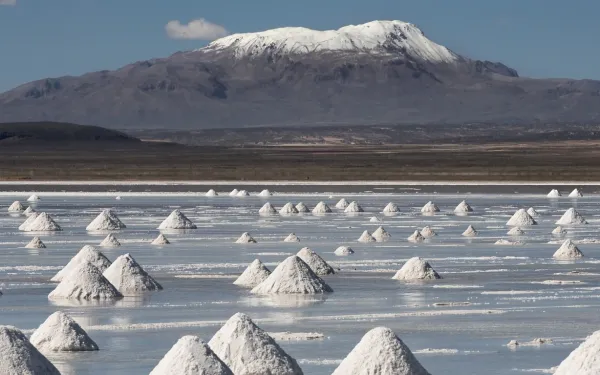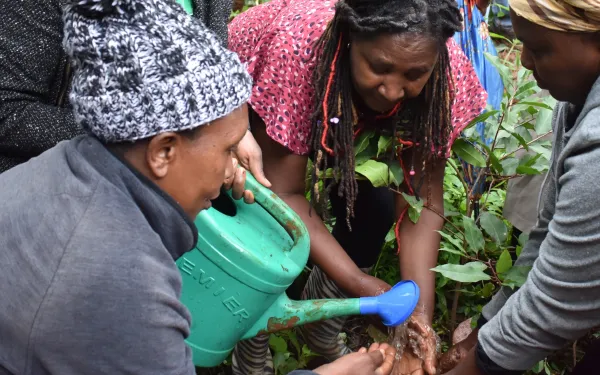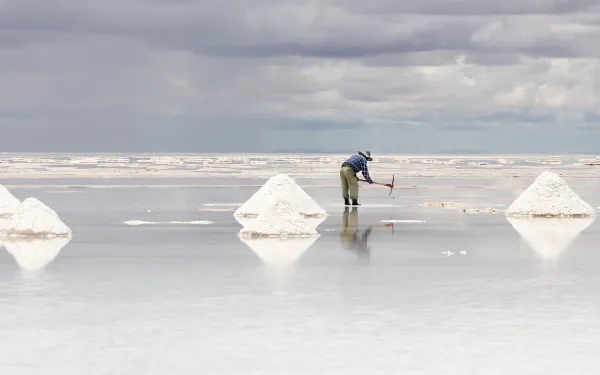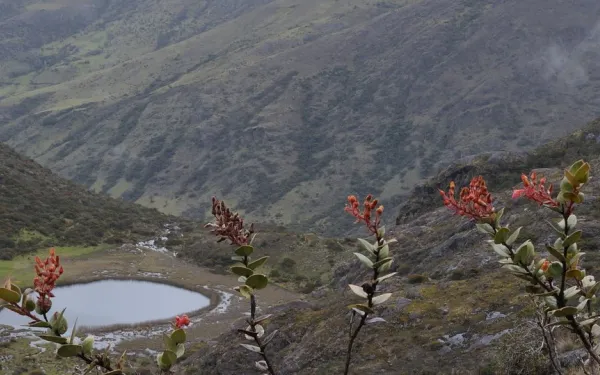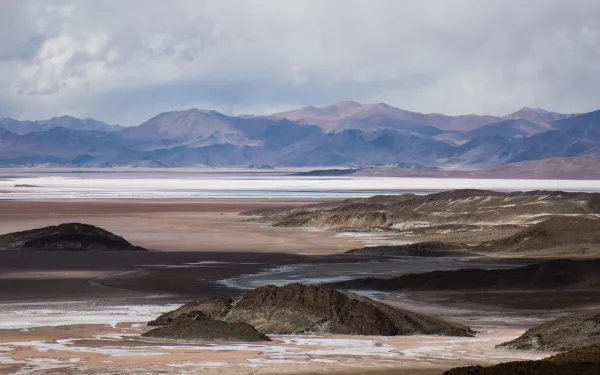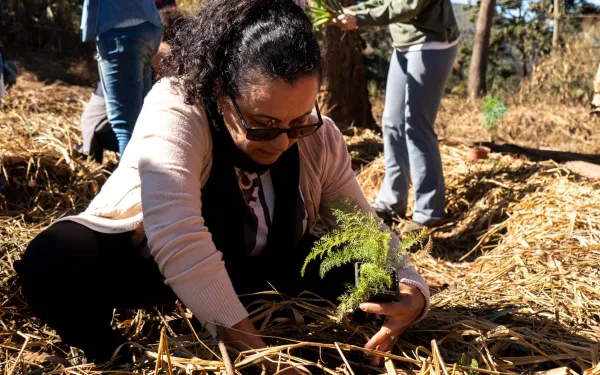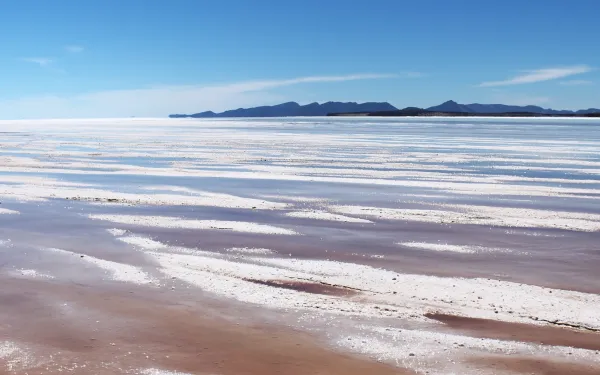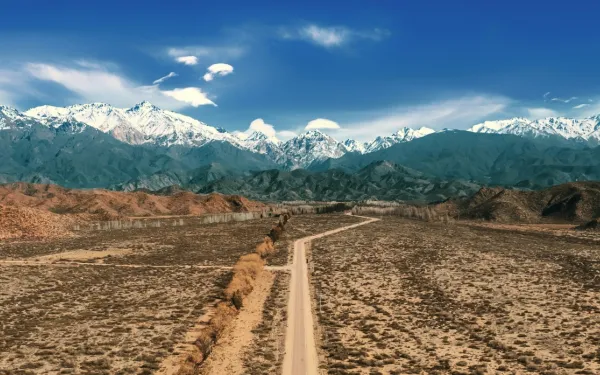
The international search for justice of the Mapuche communities in Mendoza, Argentina
In the context of a global climate crisis that has deepened existing inequalities in Latin America, Mapuche communities in Mendoza, Argentina, face multiple threats that increase their vulnerability to climate change and violate their rights.One of these activities is hydraulic fracturing, or fracking, a method of extracting hydrocarbons widely associated with socio-environmental impacts. In Argentina, it is widely used in the Vaca Muerta mega-development, which covers an area of about 30,000 square kilometers and is considered the second largest gas deposit and the fourth largest unconventional oil deposit in the world.A significant portion of Vaca Muerta is in Mendoza Province. The megaproject covers 8,700 square kilometers. Here, Mapuche communities also face a complex political environment that is threatening their territorial rights and even their identity. Added to this are national policies that are detrimental to indigenous rights in the country. These policies aim to dispossess the communities and make it easier to carry out fracking and other extractive activities.Faced with this situation, the Mapuche people are not willing to give up in the defense of their rights, their way of life and their territorial integrity.The Malalweche Territorial Identity Organization, which represents more than 20 Mapuche communities in the province of Mendoza, has appealed to various international organizations to denounce and publicize the critical situation and to demand justice.This process of international denunciation includes communications to the UN Special Rapporteurs on the Rights of Indigenous Peoples and on the Environment and Human Rights, and the submission of an amicus curiae brief to the Inter-American Court of Human Rights on climate emergency and human rights. Fracking's many impactsOil and gas extraction through fracking in Vaca Muerta takes place on the ancestral lands of the Mapuche people. Fracking is an extreme extraction technique that has significant environmental impacts, including increased greenhouse gas emissions. In the provinces of Neuquén and Río Negro, where the exploitation of Vaca Muerta is most widespread, serious environmental and human damage has been occurring for more than a decade and continues to increase.For Mapuche communities, the impact of fracking goes beyond physical damage to the environment. Extractive activities in their territories undermine their capacity for self-determination and profoundly affect their psychological and spiritual well-being, as their relationship with the land is fundamental to their identity and culture.Although fracking in Mendoza is in its infancy, with only a few active wells, the companies and the province have plans to expand it, in addition to the continued growth of activity throughout Vaca Muerta. In order to do this, they will need larger areas of land and the availability of large amounts of water. In this context, traditional practices such as transhumance – a type of seasonal migration in which shepherds move their animals between pastures at different times of the year – are seriously threatened.The growth of these activities, in the current context of water and climate crises in the region, increases the vulnerability of these communities and compromises their ability to continue living sustainably in their natural environment. Reduced human rights safeguardsThe strategy of expanding the occupation of Mapuche lands with mining and other extractive activities has led to the adoption of retrogressive policies that are undermining the framework for the protection of the rights of the Mapuche people in Mendoza and throughout the country.One of these is the declaration approved in March 2023 by the Chamber of Deputies of Mendoza, which questions the status of the Mapuche as an indigenous people of Argentina. This has raised concerns about the possibility of recognizing their territorial rights and the increase in evictions they are already suffering.Complementary measures that facilitate the development of extractive activities over the human rights of indigenous peoples are also being promoted at the national level. These include the closure by decree of the National Institute against Discrimination, Xenophobia and Racism, whose mission was to promote policies and actions aimed at achieving a society free of discrimination. This measure weakens the institutional protection of human rights.Similarly, the government announced the closure of the National Institute of Indigenous Affairs, dedicated to the promotion and defense of indigenous rights. Although this measure has not been carried out, its functional autonomy has been abolished and the areas dedicated to the recognition of communities and the regularization of their territories have been eliminated. In practice, these measures prevent these peoples from exercising their constitutional right to their ancestral lands.In addition, Law 26160, which had suspended the evictions of indigenous peoples while their territorial regularization was in process, has also been repealed. The Secretary of National Security, Patricia Bullrich, argued that there cannot be permanent laws preventing evictions, since "there cannot be a right to usurp.” Violent evictions against indigenous communities have already begun. Actions of international defenseIn response, the Mapuche communities of Mendoza have shown an enormous capacity for organization and resistance.They have turned to international bodies to expose their situation and demand concrete action from local and national authorities. A key example is the communications sent to the UN Rapporteurs on Indigenous Peoples and on Environment and Human Rights to denounce political persecution and violations of their territorial rights. These communications highlight the complacency of the authorities towards extractive interests. The focus of these denunciations has been the defense of their rights in the face of the advance of fracking and other extractive activities.Additionally, the communities were part of the advisory opinion process through which the Inter-American Court of Human Rights will clarify the continent's states' obligations to protect human rights in the face of the climate crisis.The Malalweche Organization submitted an amicus curiae brief, and its representative testified at a public hearing before the International Court of Justice to demonstrate that the extraction of hydrocarbons through fracking and metalliferous mining in their territories reduces their capacity to resist the climate crisis and exacerbates the severe water scarcity in the area, threatening their very survival.The Mapuche communities of Mendoza also presented concrete proposals for action. They called for their inclusion in all consultation and decision-making processes that affect their territories, in accordance with Convention 169 of the International Labor Organization. They stressed the importance of including their traditional wisdom in the development of public policies that benefit indigenous communities and contribute to more effective and sustainable solutions to global environmental challenges.They also called for the intervention of multilateral organizations to demand that the Argentine state guarantee free, prior and informed consultation and strengthen the national institutions responsible for protecting the rights of indigenous peoples.Supported by organizations that defend human rights and the environment, these struggles aim not only to protect the ancestral territories of the Mapuche, but also to guarantee their right to live in peace, with dignity, and in harmony with their natural environment. Their goal is to ensure the self-determination of indigenous peoples. This will allow them to manage their lands and resources in accordance with their worldview, which is deeply linked to conservation.Recognition of the rights of Mapuche communities, including the cessation of extractive activities such as fracking in their territories, is essential to protect their culture, health and livelihoods. With their ancestral wisdom, they offer a way to effectively address the climate crisis and build a more just and sustainable future.
Read more
